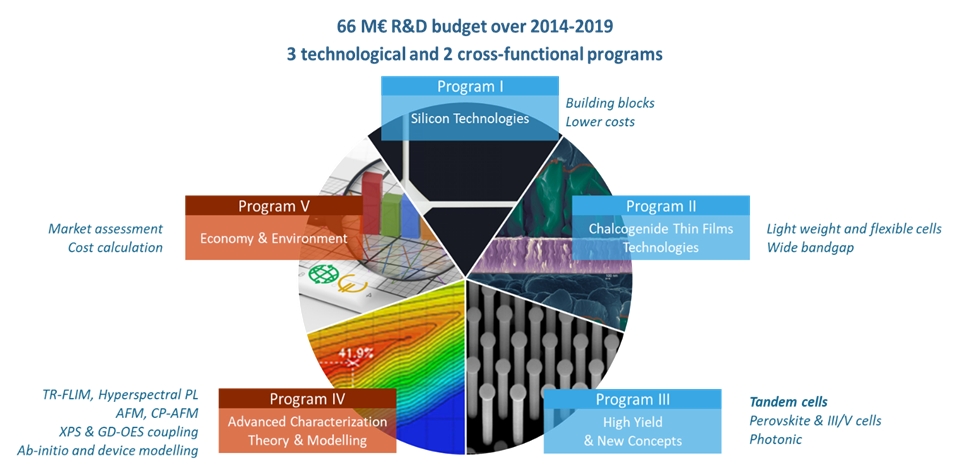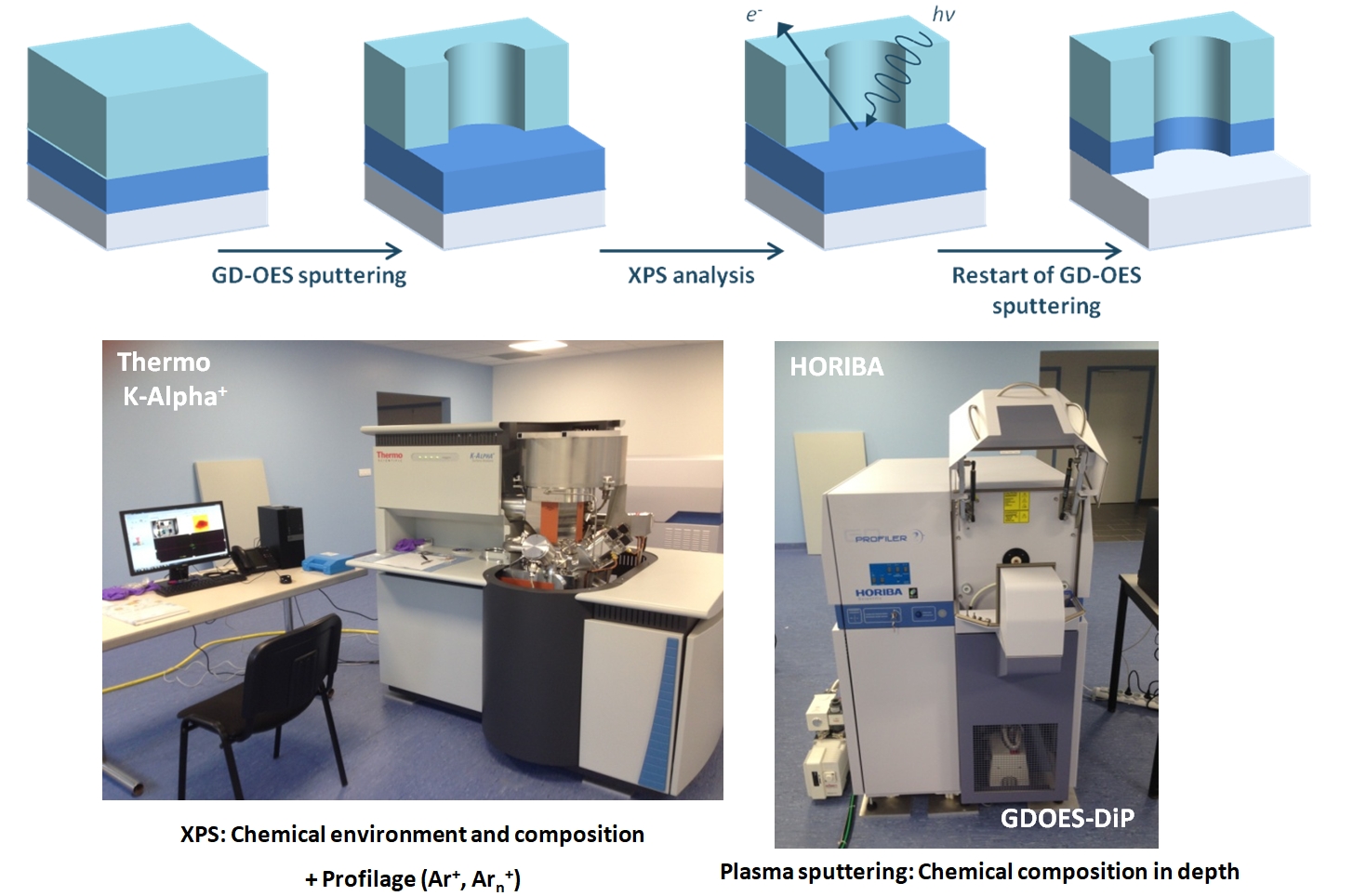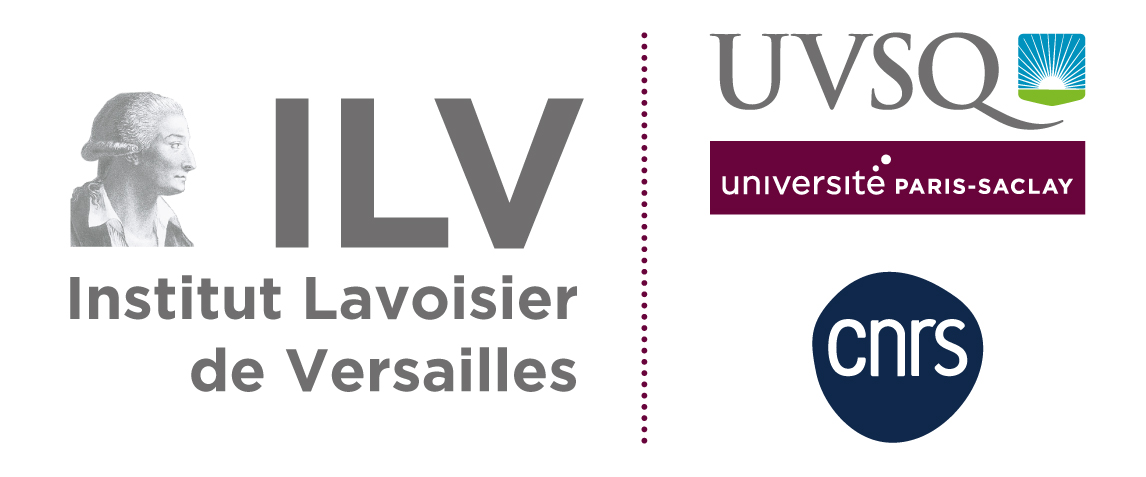You are here : ILVENFacilitiesCEFS2 PlatformSurface analysis
- Partager cette page :
- PDF version
IPVF Plateform
IPVF is supported by the French State within the “Investissements d’Avenir” (Investments for the Future) programme. Its regulatory authority is the French Secrétariat Général Pour l’Investissement (SGPI) (General Secretariat for Investment) which is one of the Prime Minister’s Departments.
IPVF was granted the status of Institut pour la Transition énergétique (ITE) (Institute for Energy Transition) by the SGPI.
The Institut Photovoltaïque d’Île-de-France (IPVF) aims to become one of the world’s leading research, innovation and training centres in the field of photovoltaic solar energy by federating globally-acknowledged academic research teams and industrial groups leaders in the photovoltaic sector.
IPVF intends to enhance the performances and competitiveness of photovoltaic cells and to develop new breakthrough technologies by focusing on three drivers:
- Research program concentrating on high conversion efficiencies, low production costs and compatibility with the sustainable development challenges of the systems and processes developed.

- A training program based principally on a Master’s Degree, mentoring for PhD students and continuous training.
- An experimental research resource facility open to photovoltaic sector players, concentrating leading-edge research equipment in a dedicated building able to host partner researchers.
This resource facility is continually evolving to tailor to research project needs and to remain at the cutting edge of technology. Two apparatus are based on UVSQ site. They aim to develop the coupling of GD-OES to have rapid access to interface of interest and XPS spectroscopy to study chemical composition (D. Mercier et al., Applied Surface Science 347 (2015) 799–807).







